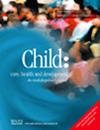Navigating ADHD in Belgian Elementary Schools: Teacher Insights and Intervention Gaps
Abstract
Background
The presence of pupils with ADHD in the classroom can influence the learning climate, impacting both the individual pupil and the broader class group. However, limited research has examined teachers' perspectives on this impact and on effective classroom approaches to support pupils with ADHD.
Method
We conducted five semistructured focus group discussions with 22 elementary school teachers from different school networks in Flanders, the Dutch-speaking part of Belgium. Data analysis was independently conducted by two researchers.
Results
According to teachers in this study, ADHD behaviour shapes the learning climate both for the pupil and their peers, as well as the broader class relations. Interventions in the approach to a pupil with ADHD can be categorized based on the level of application: individual pupil level or class context level, each encompassing multiple interventions. A key finding is that Flemish primary teachers often feel inadequately trained to address behavioural or attention disorders. Despite available resources in Belgium, such as an ADHD toolkit, their limited awareness and under-implementation in practice pose challenges.
Conclusions
The positive characteristics of a pupil with ADHD were more apparent in our research than in previously conducted studies. We also shed light on interventions within the classroom environment to support learning, such as teachers' mixed feelings about medication administration and the importance of providing information to peers. Most teachers unanimously expressed a significant lack of knowledge regarding classroom interventions due to minimal coverage in their teacher training, highlighting a need for accessible and relevant tools to address ADHD in pupils.

 求助内容:
求助内容: 应助结果提醒方式:
应助结果提醒方式:


